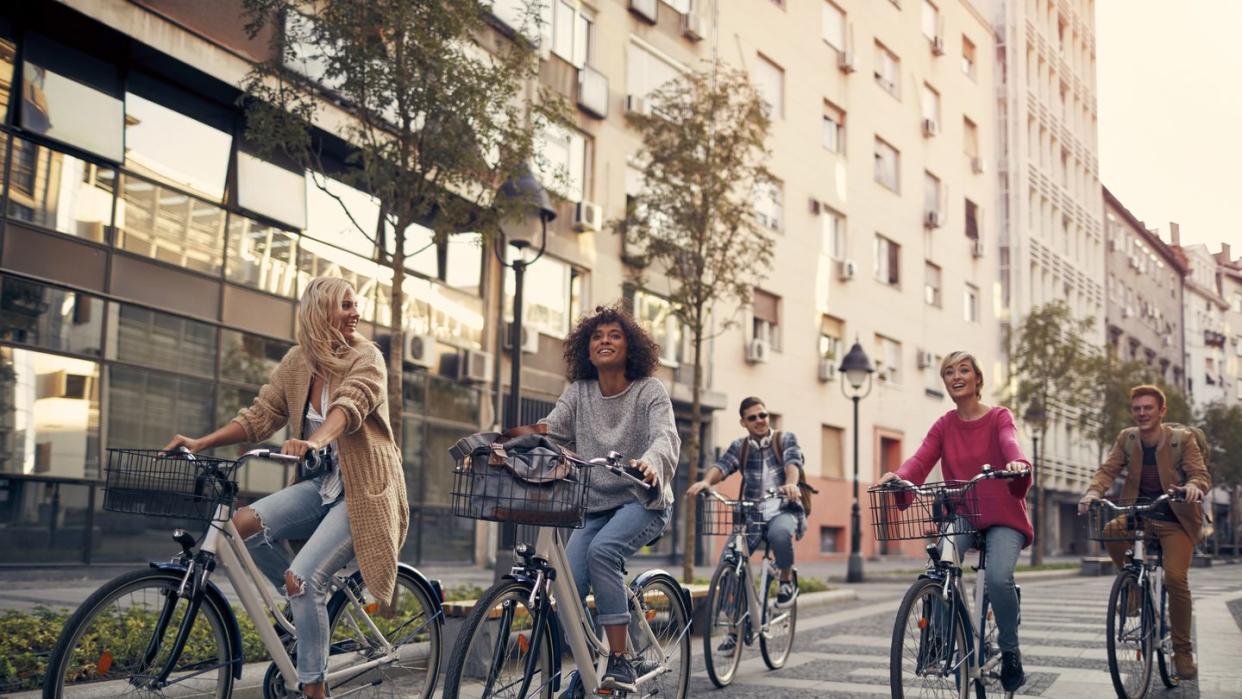Paris Closed 100 Streets to Cars for Good. Now, the City Is a Cyclists’ Paradise.

All eyes are on Paris as we inch closer to this summer’s Olympic Games, but the city is also in the spotlight because of what they’ve recently put into place in terms of infrastructure and transportation. Paris now has more than 100 city streets that are closed to motorized vehicles year-round, and the effect it’s had on the capital city has been profound.
Most recently, the city voted to triple parking charges for the biggest, most polluting cars. According to CNN, Parisians voted Sunday to make it very, very expensive to park an SUV on most streets. The vote came following a proposal by the mayor’s office as the city aims to cut air pollution and tackle the climate crisis.
Regardless of whether a vehicle is gas-powered or hybrid, larger automobiles will be charged more. According to CNN, “Under the proposal — predominantly aimed at those who drive their cars into the city from outside — combustion or hybrid vehicles weighing 1.6 metric tons or more, and electric cars weighing 2 tons or more, will be charged €18 ($19) per hour in central Paris versus €6 ($6.40) for other cars.”
Anne Hidalgo, Mayor of Paris, thanked those who voted in favor of the initiative, stressing that it was a question about ecology, road safety and public health. “Here in Paris we ensure that generations can live in a healthy environment,” she said.
Can Paris lead the way for other cities?
Following the success of many open-streets policies during the pandemic, some large cities have worked to keep popular city streets open to pedestrians and cyclists year-round.
During the COVID-19 lockdown, these open-streets were vital to health and wellbeing. According to Bloomberg, “In addition to full vehicle bans, cities created emergency sidewalk and bike lane extensions, allowed restaurants to carve out dedicated outdoor dining spaces and food loading/pick-up zones in former parking spaces, and lifted parking restrictions and fees on other areas.”
But once lockdowns were lifted, many asked themselves, why not keep this going? Afterall, health and wellbeing are still incredibly important.
Bloomberg reported, “While designed to be short-lived, these changes often proved quite popular. Usage of newly created public space soared, and some street revisions found enduring supporters: About half of the programs were extended or expanded as the pandemic dragged on. A few, like New York City’s Open Streets, for example, were made permanent.”
Pushback against car-free cities
But there has also been pushback. Like many infrastructure and wellbeing initiatives, certain neighborhoods were often given a lot of attention, while others were entirely neglected.
Curbed pointed out that while places like Berkeley, California were among cities that closed streets entirely to give small businesses a chance to bounce back, other communities were seemingly forgotten.
“Street vendors—a community made up of many undocumented immigrants—have not only been forced off the streets during the pandemic due to health concerns, but the nature of their work has always made them targets of harassment and ticketing by police. If advocates are pushing cities to give restaurants free roadway space without making a concerted effort to welcome vendors back to those same sidewalks—and, perhaps, return what they paid in permitting fees—they are discriminating against the city’s most vital and vulnerable small businesses.”
Permanent open-streets are great, but maybe less so when they only exist in white, affluent neighborhoods.
And if you’re thinking open-streets is a concept that can only be implemented in large cities, the opposite is true. The most successful, equitable versions are happening in smaller towns in the U.S. Bloomberg noted that, “When taking into account the size of the cities, we found that smaller cities tended to site open streets in a more equitable manner than their more populous counterparts.”
Pushback doesn’t mean doom
Many cities are also finding that even when there’s initial pushback for open-streets and bike infrastructure, once the changes are made, people get on board and end up strongly advocating for what they had once opposed.
Big Issue reported that the Slovenian capital Ljubljana has been car-free for more than a decade, and that people love it, but it didn’t come easy. Back 2007, the newly elected Mayor Zoran Janković was slapped in the face by a protester outside Ljubljana’s town hall.
The incident was a reaction to his ambitious plan to make Ljubljana completely car-free, part of Janković’s “Ljubljana 2025” initiative: a strategy for making the city a more liveable, sustainable and pleasant place to live.
Today, no motorized vehicles can be heard anywhere in the capital. Instead, 17 hectares of city streets are filled with people on foot and on bikes, vibrant shops and cafes, people walking dogs, and endless socializing.
According to Big Issue, Matic Sopotnik, a city official who works in the transport department, said that people couldn't imagine the city without cars. “Everybody said the city was going to die,” Sopotnik says. “But actually, the opposite happened.”
Banning cars was merely a starting point in the plan for a more “liveable” Ljubljana. Once vehicles were out of the way, all kinds of things were possible. Concerts, festivals, and events began to pop up.
“New bridges were built to connect pedestrian zones, cobblestones were flattened and kerbs were lowered to make walking easier. Small electric vehicles known as ‘Kavalirs’ were installed to take those with limited mobility across the center for free.”
Public transportation was also remodeled. A bike-share was put in place, the bus station was renovated, more green space was added, as was mixed use space for pedestrians, cyclists, and buses. The entire area became less about competing for space and ownership of the road, and entirely about sharing and enjoying.
It seems like an obvious move for any town or city, no matter the size. Eliminate cars, create infrastructure for all users, have more fun. We’re in!
You Might Also Like
